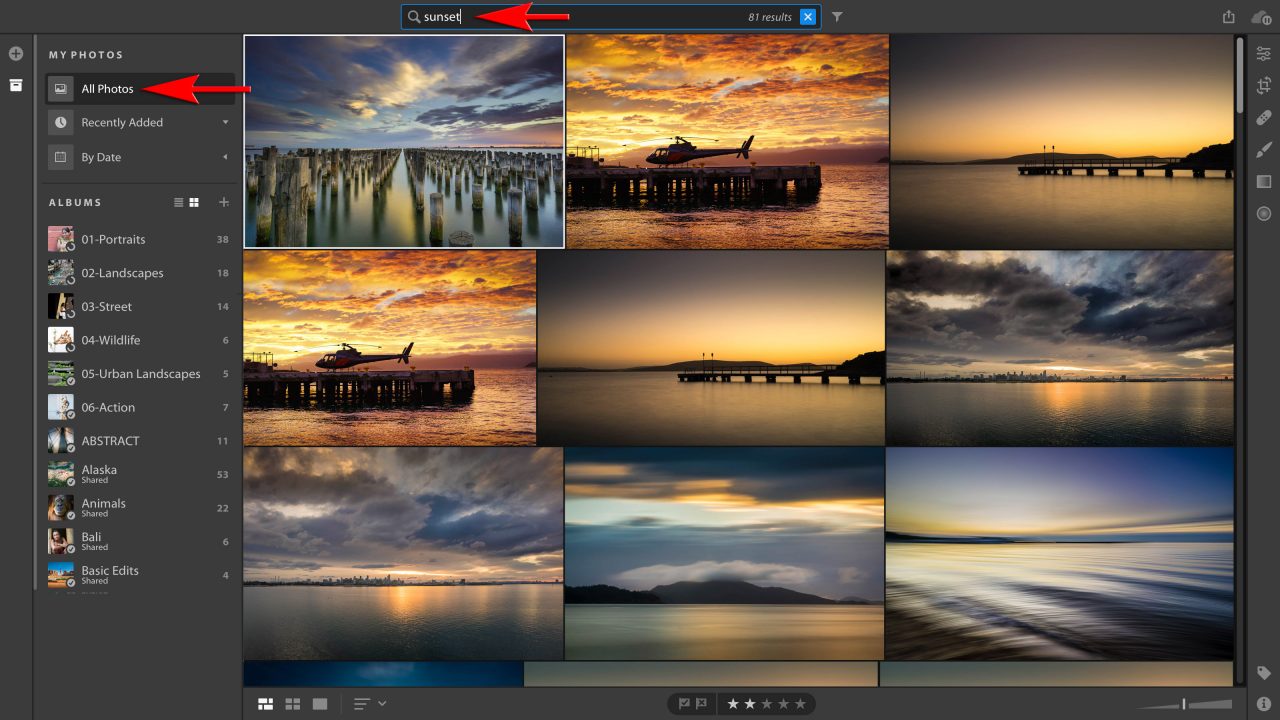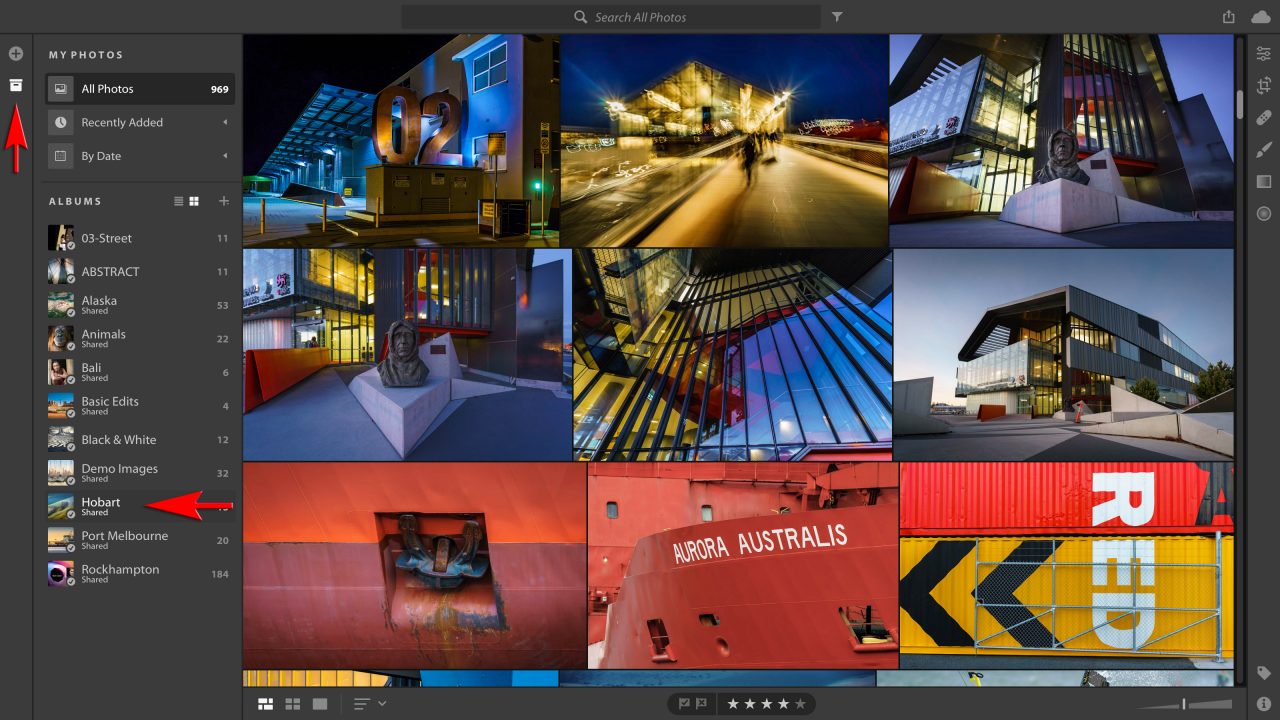Adobe, Announcements, Lightroom, Post-Production
Lightroom vs Lightroom Classic
What’s in a name?
Photographers now have two choices when it comes to working with Lightroom to manage, edit and share their images – Lightroom or Lightroom Classic. Adobe are describing the difference as either ‘Cloud Centric’ or ‘Desktop Centric’.
If you have been a Lightroom user for many years your desktop application will now, most likely, be called Lightroom Classic. For most professional and keen amateur photographers this will continue to be your application of choice. The newer Lightroom (a Cloud Centric app) has NOT been designed to supersede or replace your existing workflow. The new Lightroom simply offers an alternative streamlined workflow for users who want to store their full resolution image files in the Cloud and use Lightroom on their Mobile Devices.
The new version of Lightroom did not just spring out of thin air (or fall from Adobe’s Cloud in the sky). Adobe announced they were engaged in developmental work on a Cloud-Based Imaging App during the 2016 Adobe Max conference in Las Vegas. They called it ‘Project Nimbus’. Project Nimbus is now branded Lightroom and the program we have been calling Lightroom CC will now be known as Lightroom Classic. The idea behind the new Lightroom is that it is much more tightly integrated into working with Adobe’s Creative Cloud when compared to Lightroom Classic.


Why do we need a new Lightroom?
The new Lightroom is now designed to work with Lightroom on Mobile devices and will offer a seamless transition when users switch between Mobile and Desktop apps. It will offer many users an easier way to find an image they are looking for, even if the image does not have keywords and the user cannot remember when they captured the image. Adobe’s Artificial Intelligence (called ‘Sensei’) is integrated into the new App and can recognize most subjects and descriptive words, such as colours or tones and will quickly find any image in your Library (so long as you describe it). The new Lightroom also offers a 1-Terabyte option (required to store the full resolution images imported into Lightroom CC. Users will not have to worry about where their images are stored or if the images are securely backed up onto a second drive (in case of hardware failure). A second copy of the images is key on the users device until storage runs low (thus enabling offline editing and sharing of recent files). For many users this simplicity will be reason enough to choose Lightroom over Lightroom Classic. For some users who have found it difficult to effectively manage a Lightroom Catalog, and are regularly frustrated when they see that their images or folders of images are missing, the new software will be a streamlined, simpler and welcome change.

What are the advantages to using Lightroom compared to the Classic version?
Lightroom will be a lot easier for newcomers to Lightroom to manage and edit their images. Adobe has essentially done away with the modules. We simply see the images in a Grid or Edit view (no separate Library and Develop modules when we see the full-sized preview image). Image editing is still non-destructive (quick and easy but with slightly less advanced options) and any changes are quickly reflected in your Lightroom Apps on all your mobile devices (no need to sync collections of images from the desktop software).
Why wouldn’t I use Lightoom?
The new Lightroom imports all of your images and stores them locally and at full-resolution in Adobe’s Creative Cloud. If you capture images in the Raw quality setting and shoot lots of images you are looking at significant uploads of data. I do NOT recommend the new Lightroom CC if you do not have a fast Broadband Internet connection and a generous data allowance from your Internet Service Provider. Lightroom does not include the Book, Slideshow, Web or Print modules that are included with Lightroom Classic. Adding additional storage above and beyond 1 Terabyte is expensive and not easy to access the upgrade. This will undoubtedly change, but until then, you may be looking at archiving older files to another, more cost-effective cloud storage when your 1 Terabyte Adobe Cloud Storage is nearly full.

Are there any other Limitations to using Lightroom?
Lightroom has a broad range of non-destructive tools that many users have been enjoying in the latest versions of Lightroom Mobile, including Graduated and Radial Filters, an Adjustment Brush, Spot Removal and the HSL controls. If, however, you are an existing Lightroom user who is comfortable using the broad range of tools and features in the Develop module you may miss the following:
- Histories
- Info Overlay with cropped dimensions
- Snapshots
- Soft Proofing
- Virtual Copies
Other features that are available have been simplified, i.e. some advanced options associated with an adjustment feature may not be possible. Some examples of this are as follows:
- There is only one Post-Crop Vignette Option (no choice between Highlight Priority and Color priority)
- There is no option to change the ‘Overlay’ colour when working with a localized adjustment
- You can only publish directly to Facebook
- No Before and After side-by-side or split views
Conclusion
The new Lightroom is an attractive proposition for casual photographers who have fast Internet and want a simpler workflow with a Terabyte of online storage. For photographers currently enjoying the Lightroom Mobile apps the learning curve is super shallow. It’s a complete ‘no-brainer’. Photographers who want maximum control and flexibility over the image assets and enjoy advanced editing workflows will continue to use Adobe Lightroom Classic.
In the movies below Julieanne Kost (Adobe’s Photoshop Evangelist) outlines then differences between the two Lightroom Apps:
Mark is an Imaging Ambassador for Sony and an experienced educator
Pingback: The Angry Photographer: aka 'Old Man Yells at Cloud' - Mark Galer